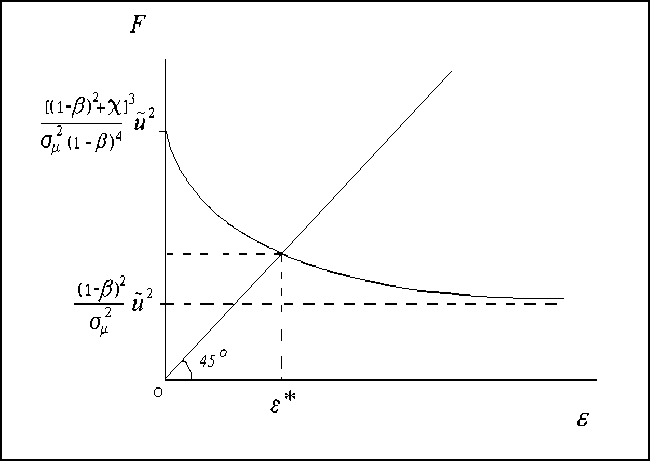12

Figure 3.1. The optimal degree of central bank independence
We are now ready to investigate the factors affecting the optimal degree of central bank
independence. Hence, we identify economic and political factors that induce politicians to
delegate more or less authority to this institution. We show that the delegation of authority
to the central bank depends on the natural rate of unemployment, society’s preferences for
unemployment stabilization, the variance of productivity shocks and the slope of the
Phillips curve. The results are derived by performing comparative static experiments with
respect to various parameters on Figure 3.1. Derivations appear in Appendix B. We
summarize the main results in four propositions.
PROPOSITION 3.3: The higher the natural rate of unemployment (the higher u), the
higher the optimal degree of central bank independence.
∂F
Proof: Appendix B shows that > 0, implying that when u goes up, the curve F(ε)
∂u
in Figure 3.1 shifts upward. As a consequence, the equilibrium value of ɛ increases.
The intuition behind this result is the following. A higher natural rate of unemployment
implies a higher time-consistent rate of inflation (See equation (2.14)) and, consequently, a
higher credibility component of the social loss function. This means that society’s
credibility problem is increased. Hence, with an unaltered relative weight placed on
inflation versus unemployment stabilization the monetary authorities’ commitment to fight
inflation is now too low.
More intriguing information
1. The Institutional Determinants of Bilateral Trade Patterns2. The name is absent
3. Biologically inspired distributed machine cognition: a new formal approach to hyperparallel computation
4. Program Semantics and Classical Logic
5. Review of “From Political Economy to Economics: Method, the Social and Historical Evolution of Economic Theory”
6. The name is absent
7. EMU's Decentralized System of Fiscal Policy
8. The name is absent
9. Growth and Technological Leadership in US Industries: A Spatial Econometric Analysis at the State Level, 1963-1997
10. Regional science policy and the growth of knowledge megacentres in bioscience clusters